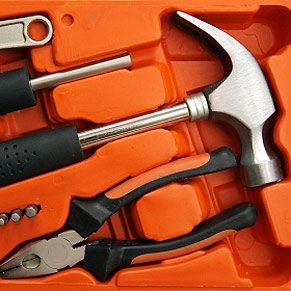
A hammer is perhaps the most useful tool for around the house jobs. It’s needed for everything from hanging photos to installing new counters.
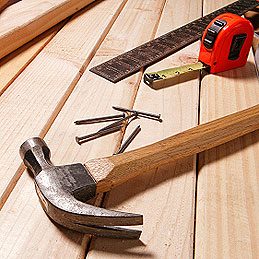
Claw Hammer
Every toolbox should have an average-weight (0.45 kilogram) claw hammer, with a two-pronged claw opposite the face, for driving and pulling nails and for light demolition work, such as busting sheetrock. Make sure the head is drop-forged steel (and not cast iron, which will chip). Whether it is wood, fiberglass, or steel, the handle should feel comfortable when you swing the hammer.
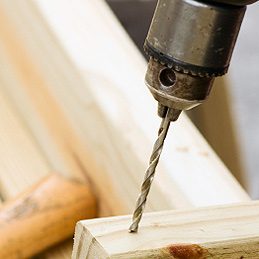
Electric Drill or Driver
For drilling and driving screws, a good electric drill or driver is a must. For all-purpose use, choose a T-handled tool, which balances the battery weight better than one with a pistol grip. One with variable speeds allows a low-rpm setting for driving screws, or a higher one for drilling to be used. Buy a basic set of drill bits and a couple of driver bits. Buy a brand you trust, and don’t pay more for packaged extras, such as flashlights and small circular saws, that won’t come in handy.
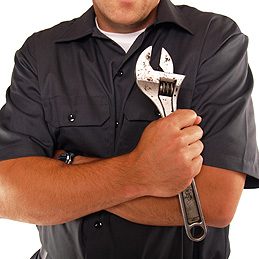
Wrench
The most common and useful type of wrench, the adjustable (or Crescent) wrench, is great for turning square and hex nuts and bolts. A thumbscrew opens and closes its parallel jaws, allowing for quick and easy adjusting. For maximum versatility, buy a medium-sized wrench.
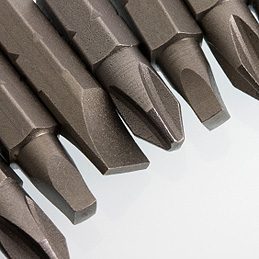
Screwdrivers
Everyone needs a handful of screwdrivers in their tool kit-at least two sizes of regular slotted screwdrivers (4.7 and 6.3 millimeters) and two sizes of Phillips screwdrivers (#1 and #2). In Canada, a Robertson square-drive screwdriver is also essential. Buy good-quality screwdrivers, which are still relatively inexpensive.
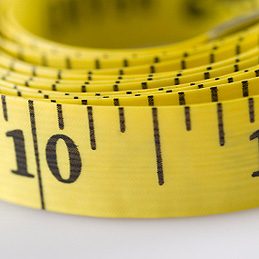
Tape Measure
Tape measures feature spring-loaded, retractable steel tapes, or “blades.” They come in different blade widths and lengths. For around-the-house use, a 5 metre tape measure with a 2 centimetre blade is a good, compact choice.
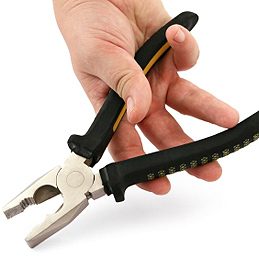
Pliers
Pliers come in all shapes and sizes, but all the basic toolbox needs is a pair of medium-sized slip-joint pliers and some needle-nose pliers. The former are made to fit the palm comfortably and be highly versatile. They have both flat and curved sets of teeth in their jaws for gripping objects of different shapes, and have an adjustable pivot or slip-joint, which makes it way to work with both small and large objects. Needle-nose pliers are useful for twisting and looping wire, fishing out dropped screws, and other delicate work.
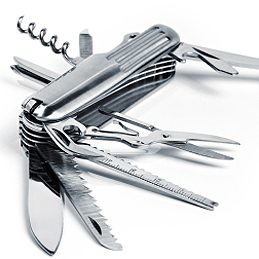
Utility Knife
Even if it’s just used to slice up cardboard for recycling, a utility knife can be a handy tool to keep around. For safety’s sake, choose a model with a retractable blade. Standard blades are double-ended (reversible), and extras can often be stored safely and conveniently in the knife’s handle.